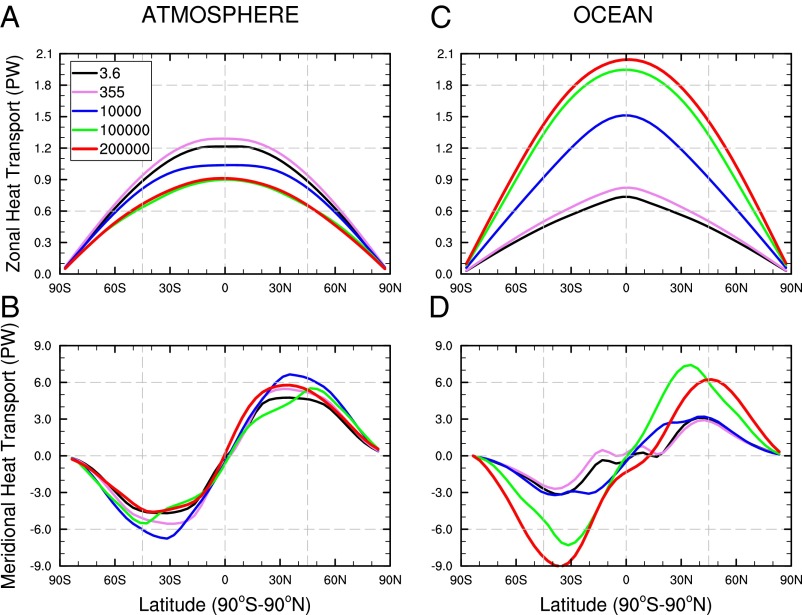Fig. 3.
Vertically integrated zonal and meridional heat transports by the atmosphere and by the ocean from the dayside to the nightside for various CO2 levels. (Left) Atmospheric heat transports; (Right) ocean heat transports; (Upper) zonal heat transports; and (Lower) meridional heat transports. Unit is PW. Zonal energy fluxes here are calculated using the method in ref. 31 We first calculate the net upward energy flux through the ocean surface. Second, we use the net surface energy flux to calculate the vertically integrated divergent ocean heat flux. Then, we use the net downward energy fluxes at both the top of the atmosphere and the surface to calculate the divergent atmospheric energy transport. Zonal energy transport from the dayside to the nightside is the sum of energy fluxes across vertical cross-sections at both vertical cross-sections of both 90° and 270° in longitude.

